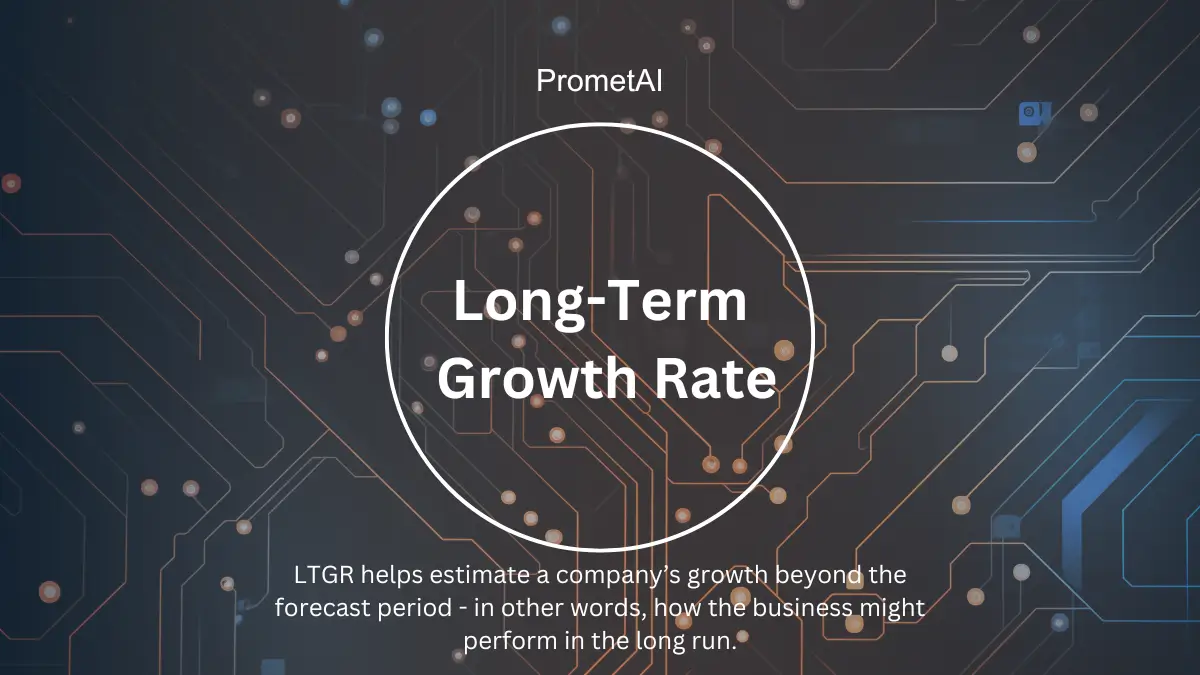LTGR helps estimate a company’s growth beyond the forecast period - in other words, how the business might perform in the long run. In a DCF model, once you've projected detailed cash flows for the first few years, LTGR is applied to estimate how those cash flows will grow indefinitely.
Because it's used to calculate terminal value, even a small change in LTGR can greatly affect a company’s valuation. That’s why understanding how to set this rate is so important, not just for financial models, but also for long-term business planning.
How to Estimate Long-Term Growth Rate?
LTGR isn’t pulled out of thin air - it’s estimated using a mix of data, judgment, and context. The aim is to come up with a growth rate that the business can realistically sustain over time, not just in the short term.
Here’s what professionals look at when estimating LTGR:
Historical performance: If a company has steadily grown at 5% per year for the last decade, that’s a useful starting point, but only part of the picture.
Industry growth trends: Different industries grow at different speeds. Tech may grow faster than utilities or manufacturing.
Economic indicators: Long-term GDP growth or inflation-adjusted growth can help set reasonable boundaries. A company is unlikely to grow faster than the overall economy forever.
Company-specific factors: Does the company have room to expand into new markets? Is it investing in innovation? Does it have a strong brand or loyal customer base?
The goal is to find a rate that reflects a stable and sustainable pace of growth - not too optimistic, not too cautious.
Long-Term Growth Rate Formula
In DCF modeling, LTGR is a central element in calculating terminal value, which captures the value of future cash flows beyond the explicit forecast period.
The formula commonly used is:
Terminal Value = (Final Year Cash Flow × (1 + LTGR)) / (Discount Rate − LTGR)
This formula assumes that after the forecast period, the company’s cash flows will grow at a constant rate indefinitely. The discount rate, often represented by the Weighted Average Cost of Capital (WACC), reflects the required rate of return for investors.
Because LTGR appears in both the numerator and the denominator of the formula, even small changes can cause large shifts in the terminal value making accurate estimation vital to the integrity of the model.
Valuation Impact & Sensitivity
LTGR is small in size, but huge in impact. A change from 2% to 3% may not sound like much, but it can cause a company’s terminal value to jump by 20–30% or more, depending on the discount rate.
That’s why financial analysts often run sensitivity analysis testing how different LTGR values affect the outcome. This approach helps reduce overdependence on a single assumption and provides a clearer view of the valuation's sensitivity and risk exposure, especially in uncertain or fluctuating market conditions.
Long-Term Growth Rate Example
Consider a case where a company is projected to generate $10 million in free cash flow in its final forecast year. If the discount rate is 8%, and the assumed LTGR is 2.5%, then:
Terminal Value=10M×(1+0.025)0.08−0.025=10.25M0.055≈186.4M\text{Terminal Value} = \frac{10M \times (1 + 0.025)}{0.08 - 0.025} = \frac{10.25M}{0.055} ≈ 186.4MTerminal Value=0.08−0.02510M×(1+0.025)=0.05510.25M≈186.4M
This result represents the value of all future cash flows beyond the forecast period, growing perpetually at 2.5%. Once calculated, this terminal value would be discounted back to its present value and added to the sum of discounted cash flows from the forecast period to arrive at the total enterprise value of the company.
This example illustrates how terminal value - and by extension, LTGR - plays a central role in long-term valuation.
